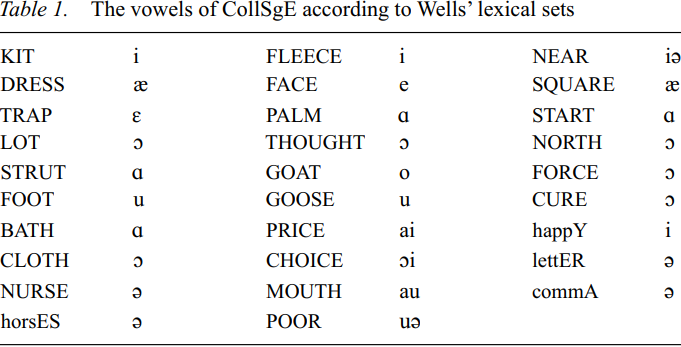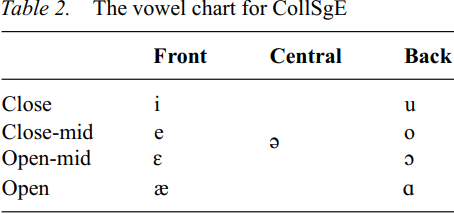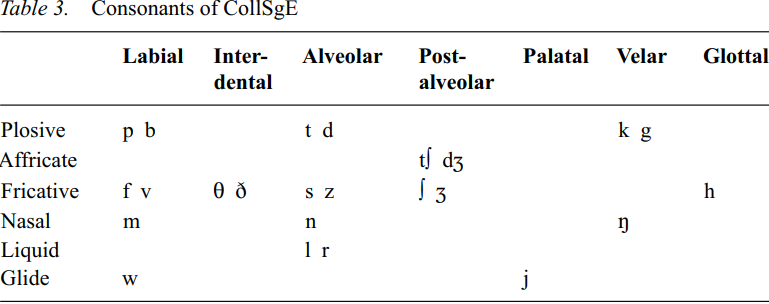

Grammar


Tenses


Present

Present Simple

Present Continuous

Present Perfect

Present Perfect Continuous


Past

Past Continuous

Past Perfect

Past Perfect Continuous

Past Simple


Future

Future Simple

Future Continuous

Future Perfect

Future Perfect Continuous

Passive and Active


Parts Of Speech


Nouns

Countable and uncountable nouns

Verbal nouns

Singular and Plural nouns

Proper nouns

Nouns gender

Nouns definition

Concrete nouns

Abstract nouns

Common nouns

Collective nouns

Definition Of Nouns


Verbs

Stative and dynamic verbs

Finite and nonfinite verbs

To be verbs

Transitive and intransitive verbs

Auxiliary verbs

Modal verbs

Regular and irregular verbs

Action verbs


Adverbs

Relative adverbs

Interrogative adverbs

Adverbs of time

Adverbs of place

Adverbs of reason

Adverbs of quantity

Adverbs of manner

Adverbs of frequency

Adverbs of affirmation


Adjectives

Quantitative adjective

Proper adjective

Possessive adjective

Numeral adjective

Interrogative adjective

Distributive adjective

Descriptive adjective

Demonstrative adjective


Pronouns

Subject pronoun

Relative pronoun

Reflexive pronoun

Reciprocal pronoun

Possessive pronoun

Personal pronoun

Interrogative pronoun

Indefinite pronoun

Emphatic pronoun

Distributive pronoun

Demonstrative pronoun


Pre Position


Preposition by function

Time preposition

Reason preposition

Possession preposition

Place preposition

Phrases preposition

Origin preposition

Measure preposition

Direction preposition

Contrast preposition

Agent preposition


Preposition by construction

Simple preposition

Phrase preposition

Double preposition

Compound preposition


Conjunctions

Subordinating conjunction

Correlative conjunction

Coordinating conjunction

Conjunctive adverbs


Interjections

Express calling interjection


Grammar Rules

Preference

Requests and offers

wishes

Be used to

Some and any

Could have done

Describing people

Giving advices

Possession

Comparative and superlative

Giving Reason

Making Suggestions

Apologizing

Forming questions

Since and for

Directions

Obligation

Adverbials

invitation

Articles

Imaginary condition

Zero conditional

First conditional

Second conditional

Third conditional

Reported speech


Linguistics

Phonetics

Phonology


Semantics


Pragmatics

Linguistics fields

Syntax

Morphology

Semantics

pragmatics

History

Writing

Grammar

Phonetics and Phonology

Semiotics


Reading Comprehension

Elementary

Intermediate

Advanced


Teaching Methods

Teaching Strategies
Phonemic inventory
المؤلف:
Lionel Wee
المصدر:
A Handbook Of Varieties Of English Phonology
الجزء والصفحة:
1024-60
2024-06-13
1156
Phonemic inventory
The following set of keywords illustrates the lexical incidence of the vowels.

(POOR is not part of the standard lexical set, but has been included here because the CollSgE diphthong /uə/ appears in words such as poor, sure and tour.)

The following table provides a summary of the consonant inventory of CollSgE. It has been noted that accents of English do not differ very much in their consonant inventories, and in this respect, the consonant inventory of CollSgE is similar to that of a variety such as RP.

Two points are particularly worth noting. One, there is no aspiration of voiceless plosives or affricates in CollSgE. This means that /p/, for example, is realized the same way in words like pin and spin. Two, the interdental fricatives tend to be realized as [t, d] when pre-vocalic and [f] when at the end of a word. For example, thin is realized as [tin] and then as [den], but in word-final position, we get [brεf] and [brif] for breath and breathe respectively. This gives an alternation between [f] and [t] in filth [filf] and filthy [filti] since in the second word, the consonant is in pre-vocalic position. Words ending in /t/ do not display this alternation, as seen with a pair such as guilt [gilt] and guilty [gilti]. It is this alternation which leads Hung (1995: 32) to tentatively posit the interdental fricatives as CollSgE phonemes even though they are, in fact, never phonetically realized as such:
It is therefore quite possible that there is a separate phoneme in SE (represented in other accents as /θ/) which is distinct from /t/ and /f/, and which is phonetically realized as [t] in the onset and [f] in the coda of a syllable. Obviously, further data and analysis are required before any such conclusion can be drawn.
Hung’s caution is understandable since this, of course, bears on the theoretical question of just how abstract phonological representations ought to be. This is a controversial issue, and perhaps particularly so in the study of new varieties of English since there are often ideological as well as more ‘purely’ linguistic ones for wanting to treat each variety as a self-contained system. Whether this is in fact possible is a matter of some contention.
Where the vowels are concerned, CollSgE contains nine monophthongs and five diphthongs. Table 2 provides a list of the monophthongs. The five CollSgE diphthongs are /ai, ɔi, au, iə, uə/.
Two features of the CollSgE vowels bear mentioning, both relating to the neutralization of vowel distinctions. The first is that there is no length contrast so that any length difference tends to be sporadic. Hung (1995: 29) points out that while Singaporean speakers may be able to detect and even mimic vowel length differences in other varieties of English, "in their own spontaneous, natural speech, no distinction is normally made…". Thus, the distinction found in RP, for example, in pairs like pool/pull or beat/bit is absent in CollSgE; the pairs are essentially homophonous instead. The other is that there is also no contrast between tense and lax vowels so that all vowels tend to be ‘equally tense’. However, given that the tense-lax distinction has been criticized for being too vague, and that tense vowels are more likely to be longer, it might be possible to reduce the two features to one, and simply note the absence of contrastive vowel length in CollSgE.
 الاكثر قراءة في Phonology
الاكثر قراءة في Phonology
 اخر الاخبار
اخر الاخبار
اخبار العتبة العباسية المقدسة

الآخبار الصحية















 (نوافذ).. إصدار أدبي يوثق القصص الفائزة في مسابقة الإمام العسكري (عليه السلام)
(نوافذ).. إصدار أدبي يوثق القصص الفائزة في مسابقة الإمام العسكري (عليه السلام) قسم الشؤون الفكرية يصدر مجموعة قصصية بعنوان (قلوب بلا مأوى)
قسم الشؤون الفكرية يصدر مجموعة قصصية بعنوان (قلوب بلا مأوى) قسم الشؤون الفكرية يصدر مجموعة قصصية بعنوان (قلوب بلا مأوى)
قسم الشؤون الفكرية يصدر مجموعة قصصية بعنوان (قلوب بلا مأوى)


















